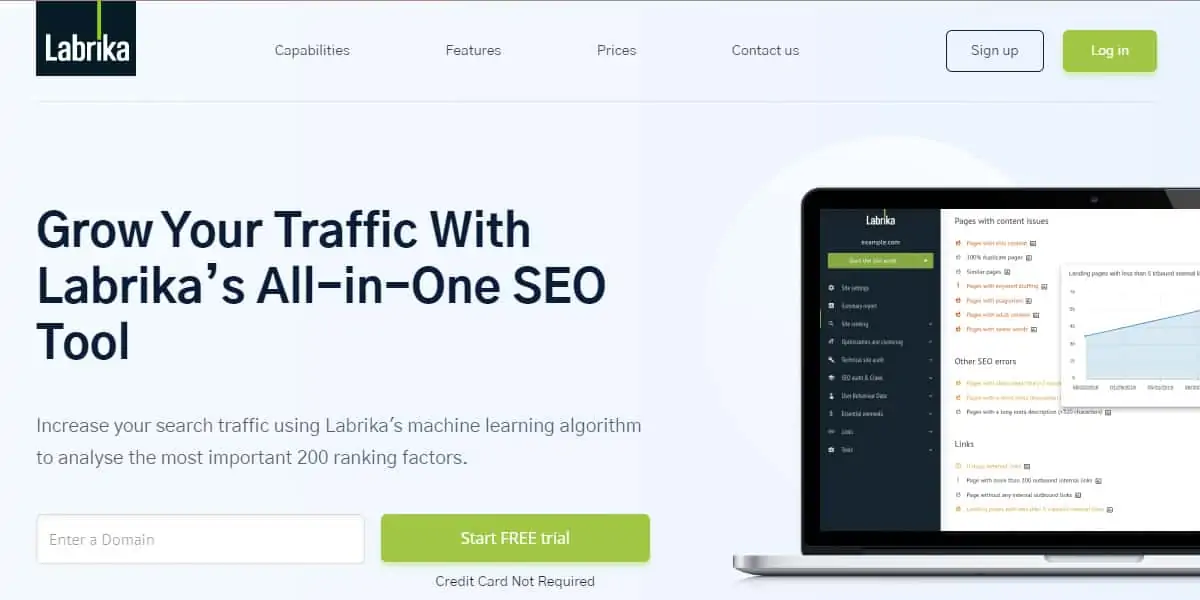Last Updated on 2 months by Christopher Jan Benitez
Content is the bread and butter of a website. Optimizing your content should be a must if you want it to reach more readers.
If you’re struggling to get your website out there, you’re certainly not alone. The stiff competition in the search rankings has made it more challenging to get your site to the first page of the search results.
The good thing is, a good content optimization strategy will get you more search visibility.
In this post, we’ll talk about how to optimize content to ensure that you gain a competitive advantage that will lead you to the top of the search engine rankings.
Why do you need to optimize your content?
The main reason usually is to rank higher on SERPs. The higher your site rankings are, the more users you will get. And more users translate to higher conversion rates which mostly equates to higher profit.
Optimized content is a huge part of the success of your content marketing strategy.
Keep in mind that content optimization is not always about page SEO and keywords, there’s a whole laundry list of factors that affect how optimized your website is.
As search algorithm continually updates, content optimization techniques also update.
The organic search result fluctuate a lot and if you see your ranking fall down for a longer period, then it might be time to revisit and update your content.
What are the key factors search engines look for?
In the old times, ranking on the search engine giant, Google, was a bit lax where you can simply add a keyword multiple times and you’ll be on your way to the top Google search results.
Digital marketing or and content marketing today has evolved. And every year is becoming more challenging for new websites to rank.
Google made it so that ranking websites should be based not only on keywords but also on user intent.
The definition for high quality content constantly evolves. In general, a high quality content means that it achieves your conversion objectives. But for that to happen, you need to optimize it well for the search engines.
Optimizing can be done in so many ways so it can be quite confusing to some. Luckily, there are general “rules” to follow to make sure that your content is optimized so search engines can properly crawl them.
Here are the key factors you need to integrate to produce a high quality content:
Meta tags and keywords
Proper meta tags are extremely important as it impacts how your site appears on the search results.
These are the title tags, meta description, image tags, keywords, and robots.txt.
For instance, the title tag of your content will influence the first click of your visitor, same goes for the meta description. The length of the title and meta description should be optimized as well.
In addition, your target keyword should be included in the page URL, title tags, meta descriptions, image or alt tag, headings, and across the blog pages.
Headings and subheadings
A wall of text is never easy to read so headers help you organize your content and create a structure. It also helps readers to easily find certain topics inside the content.
In addition, headings and subheadings such as H1, H2, H3 communicate with search engines what your page is about. You can include long tail keywords or any specific keywords relevant to your blog post too.
Links
Google follows links and arrives at the relevant pages. A solid internal linking will help Google analyze the relationship of various pages inside your content.
Internal links also improve readership. For example, if your content is about a chocolate brownie recipe, you can probably link it to another related content on your website.
Link to your sources not just because they gave you value but because you also want to share the value to your visitors. This will in turn give them a boost on their optimization. And that’s what you want for your site too!
Other websites that are linking to your page are called backlinks. And backlinks are a signal that your site is trustworthy which will increase your site authority.
Producing valuable piece of content will net you more backlinks, thus, a better signal for Google to rank you higher.
Content depth
Try to expand your content to about 1000 words and include relevant images that provide genuine value. But longer doesn’t equate to better content. It’s mostly about the value and relevance of your content to the searcher.
The ones I listed above are mainly for the content itself, however, there are still other factors that search engines use for them to place your website higher on the search engine results.
Responsive/mobile-friendly
Up to 70% of internet users are on mobile, so if your website is not mobile-friendly, you’re losing a big opportunity to get a piece of that mobile traffic.
Page speed and user experience
Google is not always about a great content. If your website loads 10 seconds, your page rankings will suffer.
Lastly, a good user interface with strategically placed calls to action help enhance the overall user experience of your users.
Content optimization tips using Labrika
The competition for search results space is intense. That’s why you’ll need to partner up with a content optimization tool that will help you look for the bits and pieces of what kind of content search engines likes.
That’s where Labrika comes in.
Labrika is an AI-led SEO tool that checks over 200 critical ranking factors to help you create optimized content and gain better conversions. Right now, it use Google as the sole search engine to analyze.
Pros
- Ease of Use
- Comprehensive data
- Shareable reports with white labeling
Cons
- Limited language support
- Unpolished search rankings results
- No keyword research and backlinks
Labrika is a very solid audit tool that gives you a full view of any site’s SEO performance. You can break down a site from how optimized its content is optimized to its technical SEO settings. There’s still a lot of room for improvement as far as UX and search result data are concerned, but Labrika is on the right track as far as being a cost-efficient SEO audit tool is concerned.
Firstly, you need to have existing content on your site so Labrika can have enough information that it needs to provide you actionable data and recommendations.
After you add your site and do a full website analysis, Labrika will automatically group relevant keywords with their respective URLs.
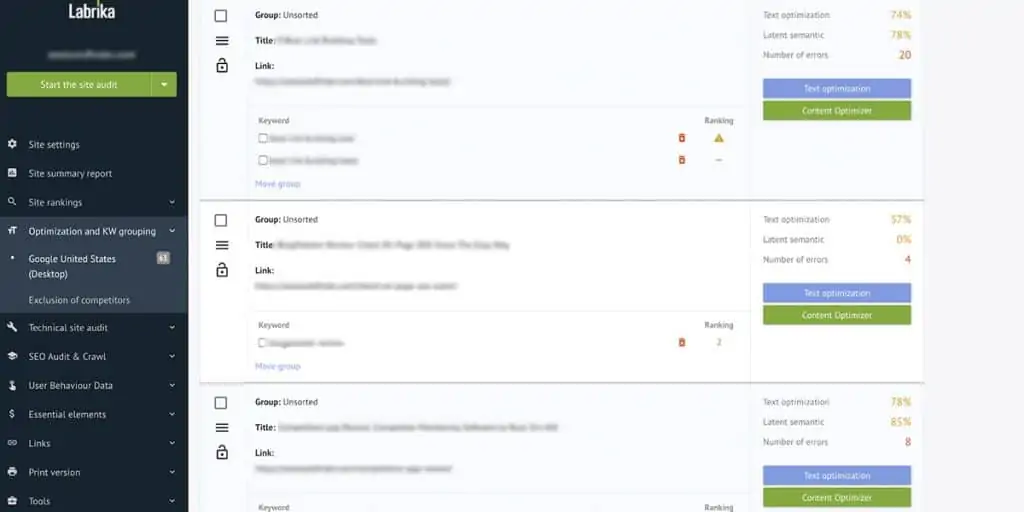
You may also find some grouped and single keywords where you need to input the URLs manually. After adding the page URL, just click the “update the data” button and it will automatically show the text optimization and latent semantic scores as well as the number of errors, if any.
Here’s what it looks like:
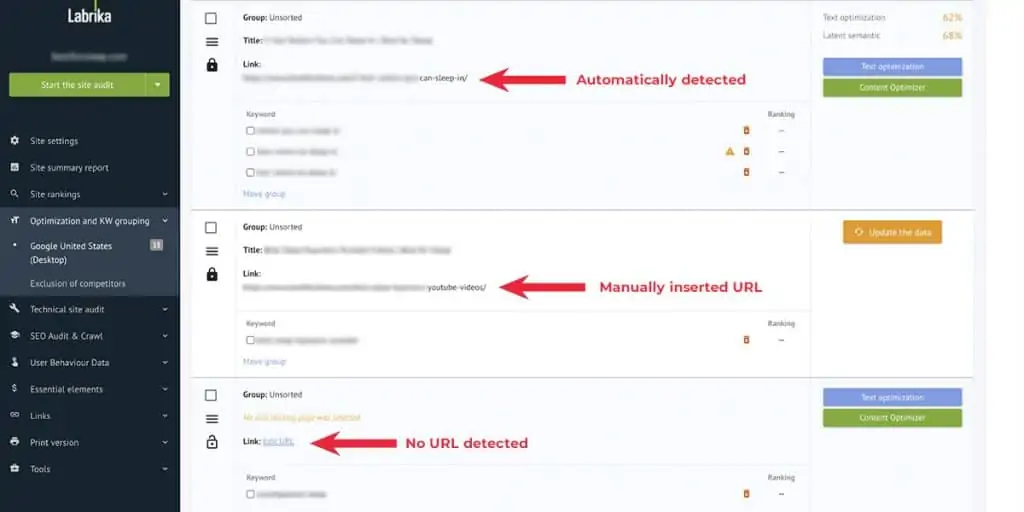
After manually inserting your URL or selecting ones from the automatically crawled pages, there are two buttons that will provide optimization tips for you: Text Optimization and Content Optimizer.
Let’s go over what these two buttons do.
Text Optimization
The text optimization button will give you complete information and guidelines to follow to get better scores. It compares your page to your competitors in the top 10 results. Simply put, the data here will provide you suggestions based on what your competitors are doing right.

For example: The top 10 pages all have 2000-3000 word content, then Labrika will suggest that your content length should be within the same range.
Content Optimizer
Content optimizer is where you’ll do the actual work. This is what the content optimizer looks like:
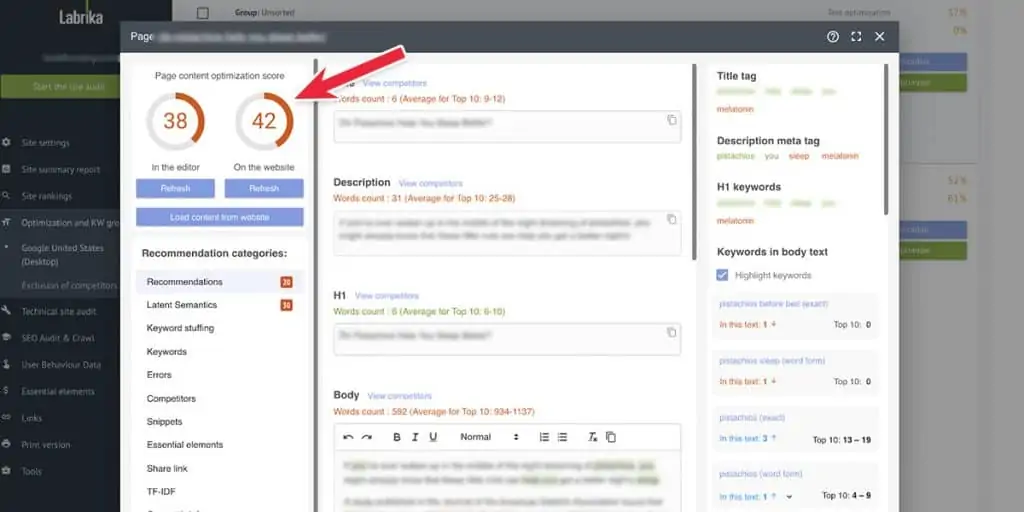
At first glance it looks like colorful chunks of confusing data. But trust me, it’s easier to navigate than it looks.
On the upper left, you’ll see big numbers showing your score on both the editor and the real time data on your site. Of course, the higher scores, the better.
Focus on the red data. That’s what you want to fix on your content.
In the image sample above, there are numbers in recommendations and latent semantic sections that indicate how many items you need to do to get better scores. The rest of the sections are additional data that you can use to gauge your own page from your competitors.
Also, if you have an external writer, you can simply share the link of the content optimizer and the same exact article editor will load up for them.
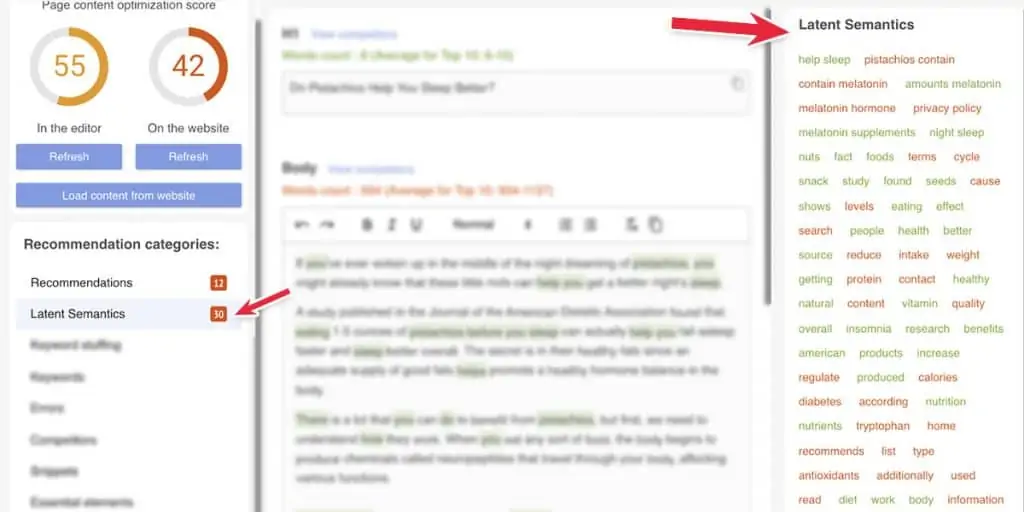
The latent semantics are the relevant words or phrases that search engines use to discover sites that share similar keywords in the same context.
You don’t have to aim for a perfect score of 100. Just try to target higher results and follow the recommendations without harming the quality of your article.
Once you’re satisfied with your scores, just copy the content and paste it on your website and Labrika will update its tool to show the real-time score of your page.
That’s it!
Labrika is a way to help you with optimizing content and, overall, your SEO strategy. Aside from being able to run technical SEO audits for you, it analyzes existing content and provides you easy to follow recommendations to ensure that your content is as optimized as possible.
Final thoughts
Creating content and optimizing it is actually not that hard, especially if you can use a tool to simplify the work for you. However, a lot of work will take upfront especially if you’re dealing with a big website that was built with no optimization in mind.
A content marketing strategy must include optimization techniques at the very beginning stage of your content creation to make your content better on the first attempt. No need to go back and forth.
But you can always go back to try to incorporate your new keyword research strategy and apply the latest updates for newer algorithms.
Hopefully, this guide to content optimization shed a light to your questions on what you can do to optimize your content better!


